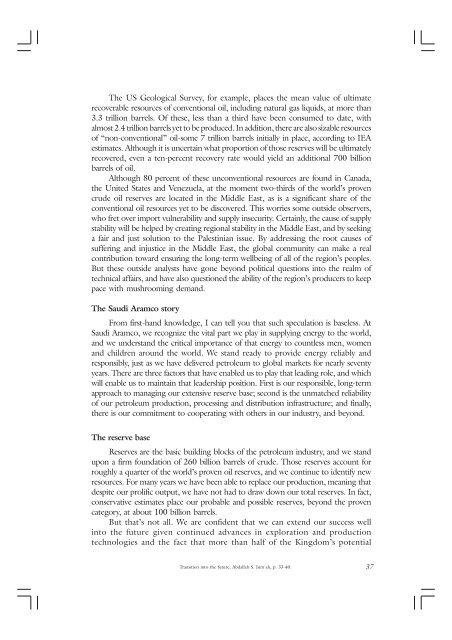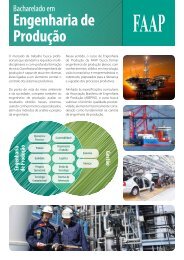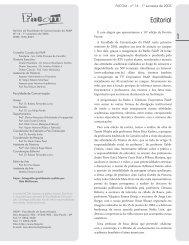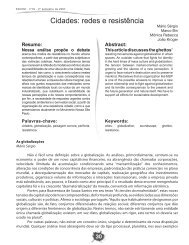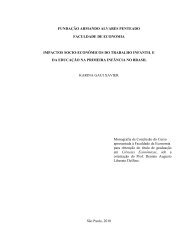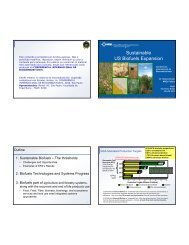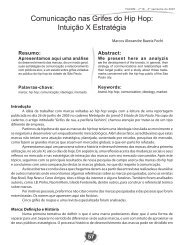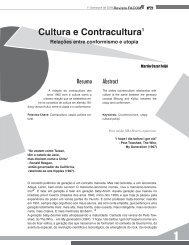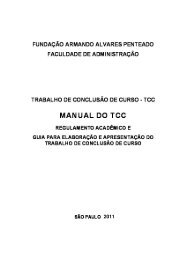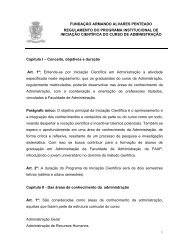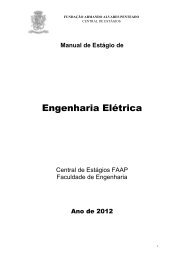Número 8 - Janeiro 2006 - Faap
Número 8 - Janeiro 2006 - Faap
Número 8 - Janeiro 2006 - Faap
Create successful ePaper yourself
Turn your PDF publications into a flip-book with our unique Google optimized e-Paper software.
The US Geological Survey, for example, places the mean value of ultimate<br />
recoverable resources of conventional oil, including natural gas liquids, at more than<br />
3.3 trillion barrels. Of these, less than a third have been consumed to date, with<br />
almost 2.4 trillion barrels yet to be produced. In addition, there are also sizable resources<br />
of “non-conventional” oil-some 7 trillion barrels initially in place, according to IEA<br />
estimates. Although it is uncertain what proportion of those reserves will be ultimately<br />
recovered, even a ten-percent recovery rate would yield an additional 700 billion<br />
barrels of oil.<br />
Although 80 percent of these unconventional resources are found in Canada,<br />
the United States and Venezuela, at the moment two-thirds of the world’s proven<br />
crude oil reserves are located in the Middle East, as is a significant share of the<br />
conventional oil resources yet to be discovered. This worries some outside observers,<br />
who fret over import vulnerability and supply insecurity. Certainly, the cause of supply<br />
stability will be helped by creating regional stability in the Middle East, and by seeking<br />
a fair and just solution to the Palestinian issue. By addressing the root causes of<br />
suffering and injustice in the Middle East, the global community can make a real<br />
contribution toward ensuring the long-term wellbeing of all of the region’s peoples.<br />
But these outside analysts have gone beyond political questions into the realm of<br />
technical affairs, and have also questioned the ability of the region’s producers to keep<br />
pace with mushrooming demand.<br />
The Saudi Aramco story<br />
From first-hand knowledge, I can tell you that such speculation is baseless. At<br />
Saudi Aramco, we recognize the vital part we play in supplying energy to the world,<br />
and we understand the critical importance of that energy to countless men, women<br />
and children around the world. We stand ready to provide energy reliably and<br />
responsibly, just as we have delivered petroleum to global markets for nearly seventy<br />
years. There are three factors that have enabled us to play that leading role, and which<br />
will enable us to maintain that leadership position. First is our responsible, long-term<br />
approach to managing our extensive reserve base; second is the unmatched reliability<br />
of our petroleum production, processing and distribution infrastructure; and finally,<br />
there is our commitment to cooperating with others in our industry, and beyond.<br />
The reserve base<br />
Reserves are the basic building blocks of the petroleum industry, and we stand<br />
upon a firm foundation of 260 billion barrels of crude. Those reserves account for<br />
roughly a quarter of the world’s proven oil reserves, and we continue to identify new<br />
resources. For many years we have been able to replace our production, meaning that<br />
despite our prolific output, we have not had to draw down our total reserves. In fact,<br />
conservative estimates place our probable and possible reserves, beyond the proven<br />
category, at about 100 billion barrels.<br />
But that’s not all. We are confident that we can extend our success well<br />
into the future given continued advances in exploration and production<br />
technologies and the fact that more than half of the Kingdom’s potential<br />
Transition into the future, Abdallah S. Jum´ah, p. 33-40.<br />
37


